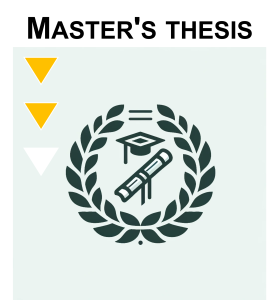Are you interested in materials research?
Are you attracted by new technologies and material characterization?
Do you want to learn how to simulate processes in solids?
Choose from some of the collaboration topics from the following areas:
Determination of metal melting points using molecular dynamics

Theme: Computational
Contact: Ing. Šimon Svoboda, simon.svoboda@fs.cvut.cz
Metal interaction potentials used in molecular dynamics do not usually respect melting temperatures well.
The aim of this topic is to provide suitable methods for measuring the melting point of solids, to simulate and compare with tabular data for selected metals.

Identifying diffusion mechanisms using molecular dynamics diffusion simulations

Theme: Computational
Contact: Ing. Šimon Svoboda, simon.svoboda@fs.cvut.cz
While the diffusion coefficient can be reliably determined using experimental physics, current instruments do not allow direct detection of the diffusion mechanism. This can be done by molecular dynamics simulations because they directly calculate particle trajectories.
The aim is to perform diffusion simulations in materials of application interest and to determine diffusion mechanisms.

Low-temperature kinetic nitriding of beta-titanium alloys

Theme: Experimental
Contact: doc. Ing. Petr Vlčák, Ph.D., petr.vlcak@fs.cvut.cz
The aim is to study the implantation of nitrogen ions into beta titanium alloy, structural changes and hardening mechanisms.
The result will be knowledge for low-temperature nitriding of temperature-sensitive materials and its practical use for nitriding some binary and ternary beta titanium alloys.

Preparation of nanoporous arrays by ion implantation

Theme: Experimental
Contact: doc. Ing. Petr Vlčák, Ph.D., petr.vlcak@fs.cvut.cz
The aim is to study the mechanisms of formation of nanoporous structures, their preparation and characterization.
The result will be to prepare a homogeneous nanoporous surface and test its properties.

Design of testing the electrochemical properties of nanoporous surfaces

Theme: Experimental
Contact: doc. Ing. Petr Vlčák, Ph.D., petr.vlcak@fs.cvut.cz
The aim is to design the layout and connection of a set for electrochemical testing of the corrosion properties of metallic and porous materials.
The result will be a functional measuring set and testing of a basic series of materials.

Nanocrystalline and amorphous surface alloys

Theme: Experimental
Contact: doc. Ing. Petr Vlčák, Ph.D., petr.vlcak@fs.cvut.cz
The aim is to design and prepare surface alloys by simultaneous electron beam evaporation of alloy elements. You will evaluate the influence of process parameters on the microstructure and characterize it by X-ray diffraction.
The result will be a nanocrystalline and amorphous alloy state for further development of advanced material structures for battery and supercapacitor electrodes.

Effect of Grain Orientation on the Sputtering of Ti39Nb Alloy

Theme: Experimental
Contact: Ing. Vojta Smola, vojtech.smola@fs.cvut.cz
The aim of the research is to investigate the sputtering rate of the beta titanium alloy Ti39Nb as a function of grain orientation. While it is well established that grain orientation plays a critical role in influencing sputtering behavior, the precise effects of individual orientations remain insufficiently characterized.
This study aims to systematically prepare a series of etched surfaces utilizing argon ion sputtering, with a primary focus on quantifying the sputtering rates associated with specific grain orientations. A key aspect of the experimental methodology will involve the use of an atomic force microscopy (AFM) to analyze surface morpghology a quantify material removal at the level of individual grains. The analysis will use a newly developed AFM coordinate system, which will be employed to locate specific grains before and after sputtering. The grain orientation will be determined using scanning electron microscopy (SEM-EBSD)
